Russia’s Goals Go Beyond Damascus: Moscow’s Middle East Resurgence – Analysis
By Anna Borshchevskaya*
The Russian military intervention in Syria on September 30, 2015, took many by surprise, but was years in the making. To evaluate its origins, success, and implications, it is necessary to understand how Russia’s domestic and foreign policies have developed under President Vladimir Putin and the ways in which they affect Moscow’s Middle East policy.
A Russian presence in the Middle East is hardly new. Imperial Russia and its successor, the Soviet Union, both asserted interest in the region and used it as an arena of competition with the West. It was not until the 1990s, during Boris Yeltsin’s presidency that Russia briefly retreated from the region. When Putin officially came to power in May 2000, he sought to restore Moscow’s image as a great power in the context of renewed zero-sum anti-Westernism. Within this framework, he has aimed from the start to return Russia to the Middle East. Syria was a critical piece of the puzzle.
Putin has multiple goals and interests in Syria, but his overarching concern has always been his regime’s survival. In Russia, domestic and foreign policy blur into one another, and foreign policy often becomes more aggressive at times of domestic discord. Putin believes his own political longevity will require a deft handling of his relationship with the West, involving simultaneous confrontation and engagement, and it is within that context that his Syrian intervention should be viewed. His interest in Syria has less to do with the country itself than with the gains it represents for the Kremlin both domestically and vis-à-vis the West.
Ultimately, it was years of Western enabling—perceived by Moscow as weakness—that emboldened Putin to intervene. Cooperation with Russia will not bring stability to Syria because Moscow’s priorities lie elsewhere.
Russia’s Duality
Putin embarked on an authoritarian path as soon as he came to power, going after Russia’s fledgling free press and creating a “vertical of power.”[1] At first, Putin took small steps, and many in the West were willing to give him the benefit of the doubt, particularly as the Cold War had ended, and Russia was no longer a priority.
However, a look at Russia’s major official documents during Putin’s rule reveals that on a fundamental level, the Kremlin viewed the West with hostility and distrust from the very beginning. Moscow’s January 2000 Foreign Policy Concept—which, among other goals, aimed at returning Russia to the Middle East—highlighted “attempts to create an international relations structure based on domination by developed Western countries in the international community, under U.S. leadership” while asserting that NATO expansionism was among the major threats facing Russia.[2] Fast forward to Moscow’s most recent version of this document, dated December 2016, which expresses the same sentiment: “[S]ystemic problems in the Euro-Atlantic region that have accumulated over the last quarter century are manifested in the geopolitical expansion pursued by the North Atlantic Treaty Organization [NATO] and the European Union.”[3]
These anti-Western ideas were rooted in the vision of a “multipolar world” advanced by the skilled Arabist and former prime minister Yevgeny Primakov, who believed Moscow should not let Washington dominate any region—least of all the Middle East. This thinking guides the Kremlin to this day.
Moscow’s anti-Westernism and siege mentality originate in czarist Russia, the government of which often pointed to the West at times of trouble to distract the public from its own failings. The Soviet government continued this tradition. At the same time, of course, the Russian leadership from Peter the Great to Joseph Stalin relied on Western technology and expertise to help the country develop and stave off economic difficulties.[4]
Russia cannot take on the West directly; indeed, it needs it to survive. Moscow seeks instead to slowly undermine the Western global order through engagement and corruption of its elites. The title of Russian analyst Lilia Shevtsova’s March 2017 article sums it up: “Russia cannot live with the West—or without it.”[5]
Fear of Regime Change
November 2003 marked the beginning of the “Color Revolutions”—peaceful uprisings against corrupt regimes that swept the post-Soviet space, beginning with Georgia’s Rose Revolution and Ukraine’s Orange Revolution of late 2004-05. At the time, the Middle East was also touched by change: Lebanon underwent the Cedar Revolution in February-April 2005.
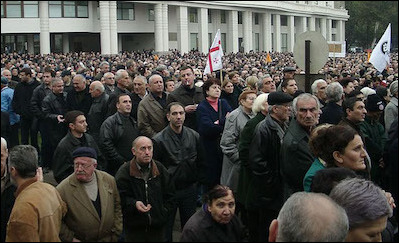
Putin saw the hand of Washington behind these events. As a KBG man in the Soviet security agency, he watched the Soviet Union itself instigate uprisings to undermine unfriendly regimes. Putin, whose understanding of the West and especially the United States has always been limited, could not imagine that the West would behave any differently towards him. As far as he is concerned, the only difference between himself and the West is wealth. According to one Russian political analyst, “Putin sincerely believes the ‘Orange Revolution’ in Ukraine was instigated by the U.S. State Department … [and] he hates the West for it.”[6]
That year, Putin became noticeably more aggressive in the foreign policy arena and more authoritarian on the domestic front. To justify the domestic measures, he used the September 2004 terrorist seizure of a school in Beslan, North Ossetia, although it was Moscow’s rescue attempt that led to the deaths of more than 300 hostages, the vast majority of whom were children.[7]
When the Arab upheavals began in December 2010, the Kremlin viewed them the same way it saw the color revolutions—and by this time Putin had become much more belligerent. Kremlin-controlled media referred to the uprisings as “chaos.” For the Russian public, the turbulent 1990s that followed the Soviet Union’s collapse became synonymous with chaos; the message resonated with Russians and indirectly supported the dichotomy of chaos vs. order that Putin had worked on establishing since his ascent to power.[8]
In October 2011, following a U.N.-led campaign, Libyan dictator Mu’ammar Qaddafi met a gruesome end after Western-backed National Transitional Council forces found him hiding in a tunnel in Sirte. Putin, who was now prime minister, saw in those events a U.N.-approved and U.S.-led color revolution that had ousted another authoritarian leader. [9] Later that year, Russia was swept by the largest anti-government protests since the fall of the Soviet Union. Putin blamed U.S. secretary of state Hillary Clinton for having “given the signal” for protesters to come out.[10] Given this mindset, it is hardly surprising that Putin backed Bashar Assad when protests broke out in Damascus in March 2011. Putin had no intention of abandoning the Syrian dictator, as protecting Assad meant protecting himself.
It is no accident that the Kremlin has always insisted that it went into Syria at Assad’s request to protect a “legitimate government” against terrorists. This line was designed to pound into the Russian audience the message that revolt against any government is always wrong. “Nobody can be allowed to try to implement the ‘Libyan scenario’ in Syria,” Putin said in February 2012.[11]
The Kremlin rhetoric of purported U.S.-led regime change worldwide has only grown in recent years. In December 2016, one major Kremlin-controlled publication unambiguously described the Arab upheavals as a “series of government coups … initiated by the American special services.”[12] Speaking at a public forum in August 2017, Russian foreign minister Sergei Lavrov highlighted the Kremlin’s conviction that Washington was behind all regime change:
Anywhere, in any country—in Eastern Europe, in Central Europe—there are a lot of facts when the U.S. embassy literally runs the [political] processes, including the actions of the opposition … I think they [Americans] themselves don’t consider it an intervention because, first, they [think they] can do anything, and second, it’s in their blood.[13]
Expansion, Buffer Zones, and Warm Water Ports
Czarist Russia always expanded, but that approach created a vicious cycle. The more peripheral lands the Kremlin conquered, the more Russia absorbed non-Russian ethnicities whose loyalty the government questioned, and the more insecure it felt at its core. It then sought yet more buffer zones through further expansion and repression.[14]
A traditional land power, Russia has also sought warm water ports since Peter the Great. Subsequent czars, especially Catherine the Great, followed this tradition, as did the Soviet Union. Soviet Marxist-Leninist ideas replaced Russia’s historic messianic mission of protecting Orthodox Christianity, but in essence, both approaches promoted aggression and expansionism, as well as the prevention of countries on the periphery from moving closer to the West.
Putin, who has never overcome his KGB origins, is the latest iteration of this history. His two invasions prior to Syria—Georgia and Ukraine—targeted countries that were moving closer to the West and possessed warm water ports. In both cases, Putin laid the groundwork for invasion through small steps that many Western analysts did not recognize as preparations for war. This approach is called maskirovka, a uniquely Russian concept of military deception.[15]
The August 2008 invasion of Georgia exposed many weaknesses in the Russian armed forces, prompting Moscow to embark on wide-scale military reform. In February 2012, Putin renewed the emphasis on improving Russia’s armed forces, including the navy.[16] He repeated this again the following year: “I would like to reiterate again that the development of a powerful, effective navy is one of Russia’s chief priorities,” he said at the inauguration of Russia’s first new class of submarines since 1991.[17] The naval doctrine of July 2017 listed among Moscow’s objects the pursuit of “other countries, most notably the United States and its allies; of dominance of the world’s oceans … and also of the crushing superiority of their naval forces.”[18]
Special Relationship with Damascus
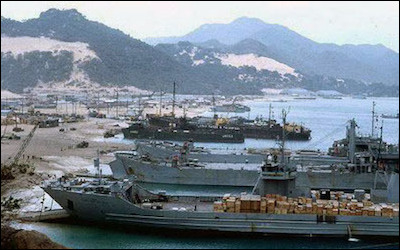
Syria was critical to the Soviet Union’s position in the Middle East during the Cold War. Its location—bordering the Mediterranean, Israel, Lebanon, Turkey, Jordan, and Iraq—made it strategically vital. Hafez Assad, Bashar’s father, was Moscow’s closest ally in the Arab world since Egypt’s defection from the Soviet orbit in the mid-1970s, and Moscow had deep military, economic, political, and cultural connections to Damascus.[19] On a personal level, Syrians felt a connection with Russians, who did not look down on them as they did on other nations in the region.[20]
After the Cold War, Moscow retained a naval facility at Tartus, Syria, its only base outside the former Soviet Union and the sole location where it maintains a permanent presence in the Mediterranean. Both Putin and Bashar Assad came to power in 2000 and have worked from the start to improve ties. Assad, for his part, admired Putin’s efforts to reduce Western influence and efforts to create a “multipolar” world.
Arms trade between the countries quickly intensified. A significant breakthrough in bilateral relations came in January 2005 when the Kremlin announced it would write off most of Syria’s $13.4 billion Soviet-era debts to Moscow and sell weaponry to Damascus. In exchange, Assad granted Russia permission to develop further its naval facilities at Tartus and Latakia. Between 2007 and 2011, Damascus purchased 78 percent of its weaponry from Russia, a six-fold increase compared to the previous five years.[21]
Beyond weapons, Russian companies reportedly had investments in Syria worth $19.4 billion in 2009,[22] but perhaps more importantly, had outstanding oil and gas projects as well as a nuclear power plant.[23] In 2009, Assad reportedly refused, under pressure from Moscow, to sign a Qatari proposal to build a gas pipeline to Turkey through Syria, Jordan, and Saudi Arabia as it would have undermined Russia’s position in the European gas market.[24]
Thus, Putin had multiple reasons to stand by Assad, which he did from the very beginning. He protected him in numerous ways, through loans, arms, trade, and diplomatic support. One example of subtle but crucial support was the June 2012 Geneva Communiqué, which outlined a U.N. roadmap for ending the violence and establishing the Transitional Governing Body (TGB) in Syria. At the Kremlin’s insistence, the document is vague about which opposition groups can be included in the TGB. This allowed Moscow to engage with those who did not demand Assad’s departure.
In 2013, Moscow visibly increased its presence in Syria.[25] When, in August 2013, Assad used chemical weapons in Ghouta, the rebel-held suburb of Damascus, killing more than 1,400 civilians, including more than 400 children,[26] he crossed President Obama’s “red line” for a military intervention. To prevent a U.S. response, Putin relied, among other things, on a Soviet-originated concept of “reflexive control”—the idea of shaping a subject’s perception to get him to do voluntarily what the Kremlin wanted him to do.[27] Oftentimes the subject is already predisposed toward making that choice, so it is simply a matter of pushing the right buttons.
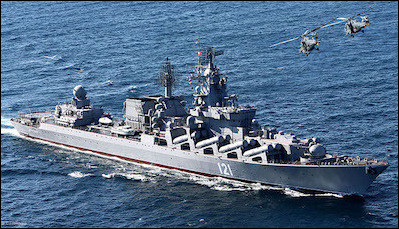
Putin perceived, correctly, that the U.S. president did not want to get involved in Syria militarily and worked to make sure Obama’s desire prevailed. “We have our plans,” Putin warned in September 2013 in the context of discussion of an intervention,[28] and sent a Moskva missile cruiser, a Baltic Fleet destroyer, and a Black Sea Fleet frigate into the eastern Mediterranean.[29]
Putin is nothing if not pragmatic. He had no interest in a direct military confrontation with the United States. These steps were intended not to cause a confrontation but to increase fear of one and bolster the perception of Putin’s unpredictability. Concurrently, Putin crafted a Russia-led deal to avoid military action against Assad in exchange for a Russia-supervised removal of Assad’s disclosed chemical weapons arsenal—resources Moscow had helped Assad assemble in the first place.[30]
Assad escaped a military intervention, but doubts remained about his undisclosed stockpiles. Smaller-scale chemical weapons attacks continued, and a September 2017 U.N. war crimes investigation found that Assad had used chemical weapons more than two dozen times in the last six years.[31]
In July 2015, as the Syrian regime was losing ground, the commander of the Iranian elite Quds force, Qassem Soleimani, visited Moscow to discuss Syria. This was likely the first step toward the Russian intervention, which would come two months later.[32] There were reports of Russia’s increased buildup in Syria, but just as in Georgia, most analysts missed its significance.
Once Putin intervened, his actions—particularly the bombing campaign—demonstrated that he wanted to force the West to choose in Syria between the Islamic State (ISIS) and Assad. The vast majority of Russia’s airstrikes did not target ISIS and, at times, even strengthened it. At the same time, Putin further entrenched Russia’s military in Syria by establishing the Khmeimim airbase, which became primary for Russian air force operations. Russian ships in Tartus also played a major role in supporting Moscow’s aerial bombing campaign.
In March 2016, Putin announced that Russia had completed its mission in Syria and was withdrawing “the main part” of its armed forces—but this was another deception. The Russian presence only grew. Khmeimim became permanent in October 2016 while, in January 2017, Moscow extended the lease on Tartus for the next forty-nine years—free of charge. At the same time, Russia set up its own peace talks in Astana, the capital of Kazakhstan, to diminish the role of the Geneva peace talks.
On April 4, 2017, Assad unleashed his largest chemical attack since Ghouta in the rebel-held town of Khan Sheikhoun, in Idlib province. For the first time, Washington, now under President Donald Trump, responded with a targeted strike against Assad. The strike sent the right message, but the message needed to be consistent, and instead, it turned out to be a one-off. Once Putin understood that, he took the initiative once again, helping to lead an effort for a partial ceasefire in southwest Syria. Soon Washington and Moscow had returned to cooperating over the embattled country. After Putin and Trump met in Hamburg on July 7, 2017, this cooperation culminated in the latest ceasefire and the establishment of so-called de-escalation zones led by Russia, Turkey, and Iran.[33]
The agreement worried Israel because it did not require Iran and its allied militias to avoid the Golan Heights—indeed, it barely acknowledged Tehran’s role in Syria.[34] But Putin got exactly what he wanted: cooperation on his own terms. The Russia-led de-escalation zones have a weaker protective framework than a Western-backed no-fly zone would have had and help to stabilize the Assad regime further.
Moscow deployed its military police to monitor the ceasefire, and the Kremlin-controlled press splashed stories all over the news about Russia’s peacemaking efforts and Syrian life returning to normal. On July 31, Moscow commemorated Russia’s Navy Day, and for the first time, celebrations took place in Syria.[35] Assad emerged in the strongest military position he had enjoyed since protests broke out against him in March 2011.
Evaluating Putin’s Success
Geostrategic gains. The Russian intervention in Syria saved Assad, enabled Putin to project great power status at the expense of the West, and entrenched Moscow further in the region. Putin’s support for Assad caused the West to accept Moscow’s terms in Syria. It also enabled Moscow to capitalize on the massive refugee flows into Europe by strengthening the far right and far left parties Putin has supported for years in the interest of destabilizing Europe. Because as long as Assad or someone like him is in charge in Damascus, most Syrian refugees will not return.
Putin can also claim partial success in deterring Washington in the Middle East. His military moves, from Georgia to Ukraine to Syria,[36] show he aims to reestablish a Russian presence across the Black Sea and the Mediterranean by creating and extending buffer zones along Russia’s periphery (anti-access area denial bubbles, A2AD). By definition, these moves are an attempt to reduce Western ability to operate. “Putin is establishing a long-term military presence in the Mediterranean Sea in part to contest the United States’ ability to operate freely and [to] hold NATO’s southern flank at risk,” concludes a July 2017 report by the Institute for the Study of War.[37]
A complete buffer means no one else can operate in a particular space. Putin has not achieved this, but the U.S. military now has to take Russia into account when considering action. It was likely the Russian presence, for example, that prompted Washington to employ cruise missile strikes against Assad’s Shayrat airbase on April 7, 2017 because such missiles are used when there is a high risk to pilot-manned aircraft. Such risks exist in Syria where the U.S. administration now has to coordinate with Russian air defense, and where there is a high possibility of miscalculation.[38] In August 2017, Moscow and Assad formally linked their air defenses in Syria,[39] which could further limit the ability of the U.S. military to support its local partners on the ground.
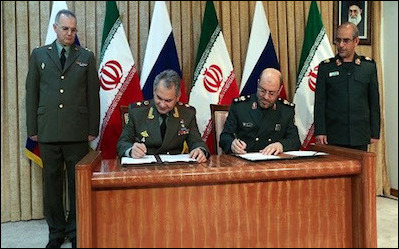
While Putin seeks to have relations with all parties in the Middle East, his actions in Syria demonstrate a clear pro-Shiite tilt. Russian-Iranian cooperation had been accelerating for years, but Syria increased it to an unprecedented level. For example, in August 2016, Tehran allowed Moscow to use its Hamedan base. Not since World War II has Tehran allowed a foreign country to base itself in Iran. Despite anger at Moscow’s publicizing of the use of the base, Tehran said it would allow Russia to use more air bases in the future.[40]
In late August 2017, Assad publicly thanked Russia, Iran, and Hezbollah for their support. The same month, Germany’s Die Welt discovered that Tehran was transferring weapons to Russia for maintenance via Syria in violation of U.N. Security Council Resolution 2231.[41] And in September 2017, Moscow threatened to veto a U.N. Security Council resolution renewing the U.N. Interim Force in Lebanon’s mandate if the U.N. labelled Hezbollah a terrorist organization.[42]
These developments show that the Russian-Iranian cooperation continues to grow, despite many predictions of a split due to their historic rivalry. This cooperation holds wide implications for U.S. policy in the Middle East. Tehran’s and Moscow’s goals in Syria are not identical, but they do not clash, and their united opposition to the West allows them to put their differences aside. For Putin, it is easier to confront the West as part of a bloc than on his own.
Domestic distraction and economic boost. Russia has a long history of turning aggressive in world affairs at times of domestic tension. Thus, the famous Russian nineteenth century satirist Soltykov-Shchedrin wrote, “[The Russian powers that be] are talking a lot about patriotism. Must have stolen again.”[43] Before the Crimea annexation, Russia’s economy had been in decline for years, and Putin’s approval ratings had reached an all-time low. After Crimea, Putin’s popularity reached an all-time high. As with Ukraine, Syria served as a distraction: a temporary drug that allowed the Russian people to forget their problems, shift blame away from their government, and indulge in feelings of patriotism.
Approval ratings in Russia are largely engineered, and Putin incessantly asks state-run pollsters to run surveys. If he believed the polling results, he would not need the constant reassurance. Yet it is fair to say that his approval did rise, even if not as much as official polls suggest, making public satisfaction another tangible success of Putin’s Syrian adventure. Feelings of elation do not last, however, and Putin will need new adventures. Syria is unlikely to be his last gambit.
On the fiscal side, the real costs of Russia’s Syria campaign remain unknown and are likely higher than the official figures, but the intervention does not appear to have emptied the state’s coffers. By the most generous estimates of Russia’s liberal party, Yabloko, the Syrian intervention cost the country approximately 140 billion roubles (roughly $2.5 billion) between September 2015 and July 2017.[44] This is a modest figure compared to Russia’s annual defense budget, which reached $69 billion in 2016, almost a 6 percent increase from 2015.[45]
More to the point, Putin used Syria as a training ground for the military and a place to advertise Russia’s weaponry, and it paid off. “The chance to test weapons in real combat can’t be overestimated,” said Deputy Defense Minister Yuri Borisov. “Customers have started queuing up for the weapons that have proven themselves in Syria.”[46]
Moreover, in the first week of September 2017, Assad’s forces led a successful offensive against ISIS in Deir Ezzour, the center of Syria’s oil production, thereby placing him ahead of U.S.-backed Kurdish-led forces into the area. Putin promptly congratulated the Syrian president,[47] and Moscow’s presence in the country will enable it to take part in rebuilding and operating Syria’s energy infrastructure. These energy resources are limited but are large enough to make the country essentially energy-independent. They also offer both strategic and economic benefits to Moscow, whose control over the energy sector will solidify its role as Assad’s “indispensable ally.” That position will in turn justify the continued Russian military presence in Syria, necessary to protect Moscow’s economic interests.
One thing Putin hoped for but did not achieve with his Syria intervention was the lifting of sanctions for his aggression in Ukraine. But on balance, his wins far outweigh his losses.
Terrorism Threat?
Putin repeatedly justified his Syria intervention with the need to strike terrorists, mainly ISIS, so jihadists do not return to Russia. Russia does indeed struggle with radical Islamism, and it only takes a few returning terrorists to stage an attack. It is also a matter of concern that Russian citizens have joined ISIS. The exact number is a matter of debate, but it is substantial enough to have made Russian the third most popular language for ISIS propaganda.[48]
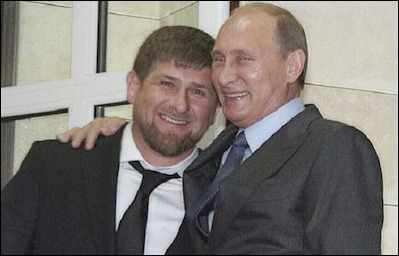
But as is usually the case with the Kremlin, the obvious argument is deceptive. Moscow is itself responsible for the rise of domestic Islamic extremism and continues to encourage it internationally. Russia’s current problems in the North Caucasus began with Chechnya’s secular struggle for independence in the 1990s, and the country grew increasingly Islamist largely because of Russia’s abusive policies and willingness to work with more radical elements of the opposition.[49] Ramzan Kadyrov, the man Moscow installed in April 2007 to pacify Chechnya, was himself a former mujahid who oversaw the republic’s Islamization.[50]
It was not until late 2013 that those North Caucasians who went to Syria and Iraq began to see themselves as part of global jihad. Prior to that point, what they wanted was to fight the Russian government.[51] “No single politician or government agency can guarantee today that the Islamic state which Kadyrov has created in Chechnya … will not be transformed over time into another ISIS,” wrote Russian liberal politician Ilya Yashin in a February 2016 report.[52] According to credible reporting, Russia’s Federal Security Service directly pushed North Caucasians out of the country to join ISIS and other terrorist groups in Syria through Turkey, especially in the run-up to the 2014 Winter Olympic Games in Sochi, essentially controlling the flow of fighters going into Syria.[53] At the same time, Moscow’s abusive and discriminatory policies toward its own Muslims have also contributed to radicalization.
Many, especially in the Middle East, believe that Russia, for all its faults, is pro-secular. Its ties to Iran are seen as an exception and are in any case believed to be skin deep. This view is flawed. From Hezbollah to Hamas, Moscow will cynically work with any group which can fulfill the Kremlin’s larger purpose.
If Moscow’s priority were in fact to target Islamist terrorism, it would have focused its campaign in Syria on ISIS rather than on protecting Assad.[54] Putin’s support for Assad—the man who caused the protest movement in Syria to radicalize—shows that Moscow is willing to back any actor who facilitates the rise of extremism if doing so suits its purposes. In October 2017, Moscow vetoed a U.N. Security Council resolution to extend the mandate of the U.N. group investigating who was responsible for the April 2017 chemical attack in Khan Sheikhoun just days before the group officially came out with its report. The report named the Syrian government as the perpetrator of the attack. These actions show that Moscow supports Assad no matter the depths of his depravities.[55]
Just as Putin presented himself to the West as a counterterrorism partner in the aftermath of September 11, 2001, Assad initially presented himself as a secular leader fighting Sunni extremists. But his regime protected the Alawite minority at the expense of all other Syrians and did not shy away from encouraging radicalization. Not only did Assad inject radicals into the protest movement that broke out against him in the spring of 2011, but much earlier, during the 2003 Iraq war, he allowed Sunni extremist fighters from around the region to cross into Iraq via Syria. And when Assad supported the anti-U.S. insurgency, Putin looked the other way.
Conclusion
It is dangerous to over- or underestimate Vladimir Putin. He had plans for the Middle East, particularly Syria, from the very beginning, and pursued them consistently. As he did so, the West dismissed Russia’s influence as inconsequential, wavered, and failed to craft its own clear vision. Putin quickly adapted as realities changed.
Yet for all his commitment to undermining the West, Putin could not have entrenched Russia in Syria to the extent he has if Washington had taken the lead and used force against Assad. Putin tested the waters and stepped in when he felt he could get away with it. His Syrian adventure is a testament to the persistent Western failure to understand Russia, a country whose problems go well beyond Putin or any other individual.[56] Just as the Soviet Union often did, Putin, took advantage of Western ambiguity in the Middle East while Western policymakers tried to divine the Kremlin’s endgame.
As of this writing, Putin has obtained most of what he wanted in Syria: Assad is in a strong negotiating position; his traditional foes are increasingly coming to accept Moscow’s view,[57] and Russia’s presence and influence in Syria are assured. As Putin gears up for a presidential election in March 2018, in which he is all but assured another six-year term, he is not bogged down in Syria. He can tout his peacemaking ability and cooperation with the West even as he is mocking it. Moscow’s cooperation with Tehran shows no signs of abating, a relationship that holds great implications for U.S. regional policy.
The Syrian conflict is extraordinarily complex and far from over. In July 2017, a senior State Department official said that Washington hoped Moscow would “freeze” the conflict—a highly unfortunate turn of phrase, as the Kremlin has years of experience in freezing conflicts to suit its purposes. With its expansion into the Middle East, the Kremlin will increasingly see this region as its sphere of influence, and a frozen conflict in Syria would surely suit Moscow’s aims.
However, Russia’s future is uncertain. Its economic situation is stable but stagnant; dissatisfaction is growing, and major protests do erupt. The country may be slowly degrading, but it retains a number of strengths and is growing increasingly militarized.
Western policymakers must recognize that the Kremlin will not be an honest broker in Syria and must work to reestablish Western leadership rather than allow Moscow to take the lead. A revitalized engagement by the West is the only way to deter Moscow’s entrenchment in the region and its consequent negative influence. The Kremlin is committed to the long game. The West should be, too.
About the author:
*Anna Borshchevskaya is the Ira Weiner fellow at the Washington Institute for Near East Policy where she focuses on Russia’s policy towards the Middle East.
Source:
This article was published by The Middle East Quarterly, Winter 2018, Volume 25, Number 1.
Notes:
[1] Karen Dawisha, Putin’s Kleptocracy: Who Owns Russia? (New York: Simon and Schuster, 2014), pp. 271–3.
[2] “National Security Concept of the Russian Federation,” The Ministry of Foreign Affairs of the Russian Federation (MFA), Moscow, Jan. 10, 2000.
[3] “Foreign Policy Concept of the Russian Federation (approved by President of the Russian Federation Vladimir Putin on November 30, 2016),” MFA, Moscow, Dec. 1, 2016.
[4] Joseph Stalin, Stalin I.V. Cochineniya—Т. 13, Beseda s polkovnikom Robinsom, 13 maya 1933 g (Kratkaya zapis’) (Moscow: Gosudarstvennoye izdatel’stvo politicheskoy literatury, 1951), pp. 260–73.
[5] Lilia Shevtsova, “Russian cannot live with the West—or without it,” Financial Times, Mar. 19, 2017.
[6] BBC News, Sept. 5, 2014.
[7] Ibid., Apr. 13, 2017.
[8] Arkady Ostrovsky, The Invention of Russia: From Gorbachev’s Freedom to Putin’s War (London: Atlantic Books, 2015), pp. 264-5.
[9] Vladimir Putin, “Rossiya i menyayushchiysya mir,” Rossiyskaya Gazeta (Moscow), Feb. 27, 2012.
[10] The Guardian (London), Dec. 8, 2011.
[11] Reuters, Feb. 12, 2012.
[12] REGNUM News Agency (Moscow), Dec. 4, 2016.
[13] RIA Novosti (Moscow), Aug. 11, 2017.
[14] Anders Åslund and Andrew Kuchins, The Russia Balance Sheet (Washington, D.C.: Peterson Institute for International Economics, 2009), pp. 11-14.
[15] Col. J.B. Vowell, “From Russia with deception,” RealClearDefense.com and Brookings Institution, Washington, D.C., Oct. 30. 2016.
[16] Rossiyskaya Gazeta, Feb. 20, 2012.
[17] Reuters, Jan. 10, 2013.
[18] Ukaz Prezidenta Rossiyskoy Federatsii, State System of Legal Information, Moscow, no. 327, July 20, 2017.
[19] Yevgeny Primakov, Russia and the Arabs (New York: Basic Books, 2009), p. 240; Anna Borshchevskaya, “Russia’s Many Interests in Syria,” The Washington Institute for Near East Policy, Washington, D.C., Jan. 24, 2013.
[20] Author telephone interview with Robert Rook, director of interdisciplinary studies, professor of history, Towson University, Md., Aug. 15, 2017.
[21] Reuters, Mar. 12, 2012.
[22] The Moscow Times, Sept. 1, 2011.
[23] CNBC, Sept. 3, 2013.
[24] Mitchell A. Orenstein and George Romer, “Putin’s Gas Attack: Is Russia Just in Syria for the Pipelines?” Foreign Affairs, Oct. 14, 2015.
[25] John Parker, “Understanding Putin through a Middle Eastern Looking Glass,” Strategic Perspectives, no. 19, Institute for National Strategic Studies, Washington, D.C., July 2015.
[26] The Washington Post, Aug. 30, 2013.
[27] Timothy Thomas, “Russia’s Reflexive Control Theory and the Military,” Journal of Slavic Military Studies, 17 (2004): 237–56.
[28] The Guardian, Sept. 4, 2013.
[29] Ibid.
[30] James Brooke, “Russia Helped Build Syria’s Chemical Weapons,” The Moscow Times, Sept. 10, 2013.
[31] Reuters, Sept. 6, 2017.
[32] Ibid., Oct. 6, 2015.
[33] Al-Jazeera TV (Doha), Sept. 15, 2007.
[34] Amos Harel, “Trump and Putin Are the Real Targets of Israel’s Alleged Strike in Syria,” Haaretz (Tel Aviv), Sept. 8, 2017.
[35] The Independent (London), July 31, 2017.
[36] Anna Borshchevskaya and Jeremy Vaughan, “How the Russian Military Reestablished Itself in the Middle East,” The Washington Institute for Near East Policy, Washington, D.C., Oct. 17, 2016.
[37] Charles Frattini III and Genevieve Casagrande, “Russia’s Mediterranean Threat to NATO,” Institute for the Study of War, Washington, D.C., July 13, 2017.
[38] Author interview with anonymous U.S. aviation source, Washington, D.C., Aug. 17-18, 2017.
[39] TASS, Aug. 25, 2017.
[40] Voice of America, Mar. 28, 2017.
[41] Welt N24 TV (Berlin), Aug. 14, 2017.
[42] Zvi Bar’el, “Russia’s Moves on Hezbollah in Syria Expose How Trump’s Mideast Policy Endangers Israel,” Haaretz, Sept. 8, 2017.
[43] Leon Aaron, “Why Vladimir Putin Says Russia Is Exceptional,” The Wall Street Journal, May 30, 2014.
[44] Vedomosti (Moscow), July 20, 2017.
[45] CNN Money, Apr. 24, 2017.
[46] U.S. News and World Report (New York), Aug. 30, 2017.
[47] Voice of America, Sept. 6, 2017.
[48] Window on Eurasia (Washington, D.C.) June 24, 2015.
[49] “Chechnya and the bombs in Boston,” The Economist, Apr. 20, 2013.
[50] Steve Rosenberg, “Kadyrov’s Chechnya rises from the ashes, but at what cost?” BBC News, Sept. 18, 2012.
[51] Jean-François Ratelle, “North Caucasian foreign fighters in Syria and Iraq: Assessing the threat of returnees to the Russian Federation,” Caucasus Survey, Sept. 2016, pp. 218-38.
[52] Ilya Yashin, “A Threat to National Security: An independent expert report,” Boris Nemtsov Foundation for Freedom and Free Russia, Moscow, Feb. 2016.
[53] Elena Milashina, “Khalifat? Primanka dlya durakov!” Novaya Gazeta (Moscow), July 29, 2015.
[54] Genevieve Casagrande and Ellen Stockert, “Russian Airstrikes in Syria: Pre- and Post- Ceasefire,” Institute for the Study of War, Washington, D.C., accessed Oct. 13, 2017.
[55] The Washington Post, Oct. 24, 2017; Reuters, Oct. 26, 2017.
[56] Mikhail Khodorkovsky, “A Problem Much Bigger than Putin,” The New York Times, Sept. 12, 2017.
[57] Bloomberg News (New York), Sept. 8, 2017.

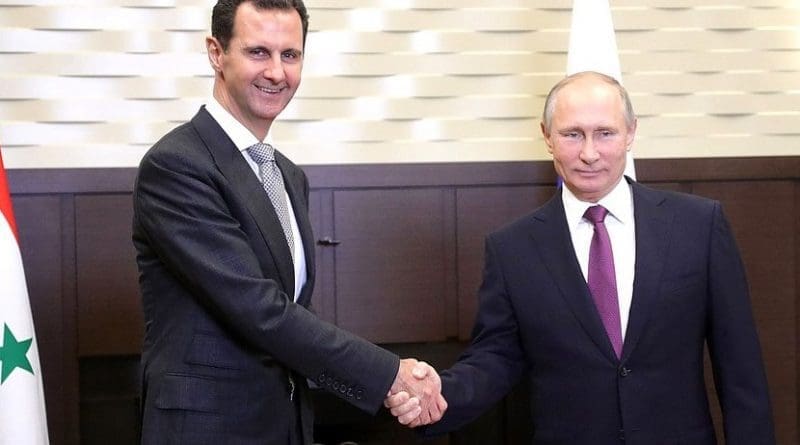
As an American I feel obligated to call you an outright liar. The U.S. has and always will be loved in my heart but WE are the bad guys this time. You say Russia never targeted Isis but it’s gone as soon as Russia set to fighting them at the same time the Americans were arming them. You talk of warm water ports while lying about the fact that the U.S. got involved and funded a revolt in the Ukraine to take away a the only warm water port(doesn’t freeze in the winter) that has been used by Russia for 400 years. You insult American intelligence. And might I ask who you think has prospered while the other failed? In glad we failed at taking that base from Russia because we most certainly would have ended up in a war with Russia over it. President Putin said himself they would never have accepted its loss. And if we can’t contain Syria or Libya what makes your pompous mind think we could win an eastern front war that EVERY country before failed against. I feel it important to add that it was the Soviet Union that gifted crimes to the Ukraine when they were comrades. Its an obvious conclusion that it would return to the country that owned it for over 400 years in the name of national secrurity. Stop assuming Americans are all blind and ignorant patriots. I know you are aware that you are lying to people.